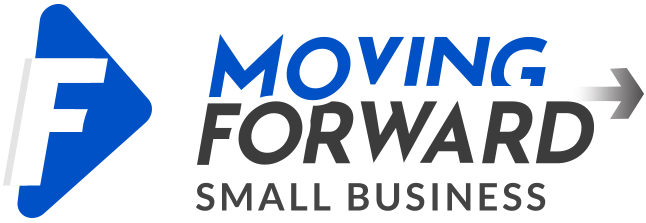One of the most important things you can do to improve your rankings in search engines like Google, Bing, and Yahoo! is to build links to your website from other sites, also known as backlinks. These links are vital to search engine algorithms like Google’s PageRank, which use them to figure out how much value to assign your site when it comes time to display your content in their search results. More backlinks mean more value, which means better ranking on page one of the search results — which means more traffic and more leads!
What Is A Backlink?
Links that point to your website from external sites are called backlinks. Google (and most other search engines) use backlink counts as a key ranking factor, so getting more links is important. There are many ways to get more links—blog comments, guest posts, infographics, social media shares, and more—but there’s only one strategy that helps you earn these links: creating awesome content and then promoting it. Here’s how it works.
A link on another site is an inbound link when it points at your site; it’s an outbound link when it points away from your site. In either case, we call any text-based link an anchor text. If you want more inbound links—and therefore backlinks—the anchor text should point directly to a relevant page on your website using keywords relevant to what you want visitors to find. If a reader sees a bunch of different words in anchor texts but doesn’t notice any meaningful connections between them and what they’re looking for on your site, they won’t click through—even if those terms rank well for search engines. That’s why using phrases rather than single words for keywords can help create natural-looking anchor texts.
Why Do You Need A Link Building Strategy?
A well-established link-building strategy will help your website earn more referral traffic and rank higher in search engine results. If you’re not sure what that means, don’t worry. Here’s a quick run-down of why links are so important when it comes to SEO and how they can benefit your website in terms of rankings and increased traffic. As Google’s search algorithm changes, SEO strategies have had to adapt accordingly, including a greater focus on quality links (more on those later). But how do you build backlinks? And how many backlinks should you be earning per month? Read on for more information about link building for SEO and other important factors related to earning new links. You’ll also find some tips for keeping track of everything! We hope these suggestions prove helpful as you consider creating a plan for earning backlinks.
Types of Links
The first thing you’ll need is a list of different types of links that you can create. The most common types are inbound links, backlinks, and shout-outs. An inbound link is a reference from another site to yours (they point to your website). Links can be found on websites, social media accounts (like Facebook or Twitter), via press releases, in image files, and much more. A backlink is an inbound link from a high-quality source. For example, if someone posts about your business on their personal website, it’s considered a backlink. A shout-out is when someone references you by name or brand without linking to your site directly—it’s usually done through social media.
Examples include tweeting I love @brandnamecoffee! #coffee #goodstuff or posting about BrandNameCo. in a forum thread. If you have any type of online presence, there will likely be many opportunities to build these three types of links. You should also look into building contextual backlinks – they’re typically text links embedded within other content on other sites. This type of link is easier to get than one from an external site because people tend to trust content already published on other sites over something published by a new site with no reputation yet.
The Different Types of Campaigns
Depending on what kind of campaign you’re running, it may be better to build links in different ways. For example, paid links often work best when placed as advertisements or sponsored listings on websites. On-page links can be a great way to supplement your natural backlink profile. Choose a reputable site that will link naturally from high-authority content if you want quality over quantity. If you want high-quality natural backlinks—also known as organic links—you’ll need a strategy that combines strategic keyword research with hundreds of fresh linking pages over time. Each type of campaign is going to require its own type of links for success. So, make sure you do your research!
And remember, even though Google has made some major changes to its algorithm in recent years, they still value good old-fashioned high-quality links. And if you don’t have any now? Don’t worry! We’ll teach you how to get them later on. 🙂
Link Outreach Vs. Content Marketing Vs. Guest Posting
The good news is that you don’t have to choose between link outreach, content marketing, and guest posting. You can reap even more SEO rewards by harnessing these three strategies in tandem. However, it’s important not only to understand how each strategy works—but also when and where you should employ them. For example, content marketing should be a priority if your website doesn’t already rank well in search results—because it helps build authority over time (and thus attracts links). But if your site has a healthy number of quality backlinks pointing toward it—content marketing might not make sense since there are no new pages or content that need exposure. Instead, focus on building high-quality backlinks through link outreach.
When it comes to guest posting, don’t go overboard with it. Remember: It takes time for your byline to become an authoritative one—so be patient! Focus on creating quality posts first and foremost, then use them as an opportunity to pitch yourself as a guest blogger. You may get rejected at first but keep trying until you find some publications that are interested in what you have to say.
As long as your content is useful and informative, people will share it—which means potential new backlinks for your site.
On the other hand, you shouldn’t spend too much time worrying about any single technique . . . because all roads lead to Rome! If one avenue isn’t working out for you, just try another route instead. If a specific platform isn’t getting you any traction, look elsewhere. And if things still aren’t going well after six months or so of hard work… maybe it’s time to pivot? At least then, all those hours spent spinning your wheels won’t feel like such a waste of time.
Your Authority in Your Industry
Why is it important to build links? First and foremost, links from other websites send traffic directly back to your website. This traffic can be referred to as link juice. When a website or search engine crawls a web page, all of its links are crawled along with it. If you receive lots of external links, it will seem like people trust you enough that they’re willing to point their own website visitors toward yours. Search engines also use backlinks as a measure of how much authority you have in your field; thus, receiving more links demonstrates that you have more authority and adds weight behind your site’s ranking on search engines.
It’s not uncommon for sites to lose rankings once they stop getting new backlinks. In addition, if you want your site to rank higher than a competitor’s, building more links than them is one way to do so. Finally, building high-quality backlinks requires time and effort (and money). This means that getting others to do work for you—for free—is an easy way to get ahead of competitors who aren’t doing so well at SEO.
The Two Most Common Mistakes When Trying to Get Links
You’re either overdoing it or under-delivering. While it’s important to optimize your content and give people a reason to link back, you also have to offer value in return. If all you have is a low-quality website without providing anything in return, no one will want to link back; conversely, if you only focus on self-promotion with little regard for others’ needs, you’ll turn people off. Finding that sweet spot between keeping people interested and using your content to drive traffic back is key. Remember, links are a two-way street—if there isn’t something compelling at their end as well, no one will bother taking them.
Use a Backlink Tool to Help
The easiest way is using a backlink tool like Ahrefs that shows the referring domains and the number of backlinks. It’s very convenient because you can easily find people linking to a competitor’s website, outreach them with your content and ask for a link in return. Depending on how influential the site owner is, they may want a backlink as well to even out the deal. You don’t need anything fancy here, just some great content!
Conclusion
Make sure you provide genuine value, so they can do what they need to do when they get there. And don’t forget to build relationships before asking for favors. Building up trust can go a long way toward getting what you want out of those around you—and more often than not, once someone has done something nice for you once, they’re much more likely to help again later on down the road. When building links, keep these things in mind, and I guarantee your results will improve tenfold! In addition to knowing how to ask for links, you should also know how to determine which ones will be most effective. When looking at different sites and trying to decide which ones would be best for you, make sure that they’ve actually got some relevance in terms of keywords and industry. Otherwise, why would anyone care about what you have to say?


